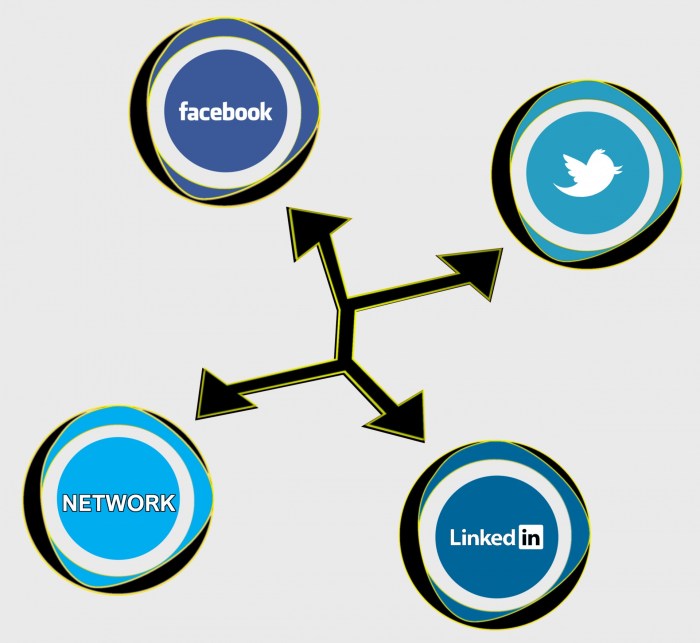
Media law and censorship are intertwined elements that shape the landscape of communication and expression in our society. As the digital age progresses, understanding the principles of media law becomes essential, particularly as it relates to the protection of free speech and the role of censorship. Examining landmark cases and various forms of censorship worldwide gives us insight into the challenges and implications these laws pose on media and society at large.
From the First Amendment’s fundamental role in safeguarding press freedom to the complex legal challenges faced by sports media, the discussion around media law illuminates the balance between regulation and expression. By exploring case studies of censorship in different countries, we gain a clearer view of how these laws influence the narratives presented to the public.
Media Law Fundamentals
Media law serves as a crucial framework that governs the rights and responsibilities of individuals and organizations in the dissemination of information. It encompasses various principles that ensure freedom of expression while balancing societal interests such as privacy and public safety. Understanding the fundamentals of media law is essential for anyone involved in journalism, broadcasting, or content creation, as it shapes the legal landscape within which media operates.The key principles of media law include the protection of free speech, the right to privacy, defamation laws, and regulations concerning copyright and intellectual property.
These principles are designed to protect both the media and the public, while also maintaining the integrity of information dissemination. In the United States, the First Amendment plays a pivotal role in media regulation, establishing the foundation for freedom of expression and press, which is crucial to a democratic society.
Role of the First Amendment
The First Amendment of the United States Constitution is instrumental in shaping media law, offering robust protections for free speech and press. Its significance lies in the assurance that individuals can express their opinions without government interference. The First Amendment prohibits Congress from making laws that infringe upon the freedom of speech, press, assembly, and petition, thereby providing a legal shield for media practitioners.Several landmark cases have highlighted the importance of the First Amendment in media law.
Notable examples include:
- New York Times Co. v. Sullivan (1964): This case established the “actual malice” standard, which requires public figures to prove that false statements were made with knowledge of their falsity or with reckless disregard for the truth.
- Brandenburg v. Ohio (1969): This ruling reinforced the protection of inflammatory speech, asserting that speech can only be restricted if it incites imminent lawless action.
- Hazelwood School District v. Kuhlmeier (1988): This case allowed schools to exercise control over student publications, balancing the rights of students with the educational mission of schools.
These cases demonstrate how the First Amendment has been interpreted and applied in various contexts, significantly influencing media practices and the legal responsibilities of journalists. The evolving nature of media law continues to reflect the challenges faced by society, especially in the digital age, where issues related to censorship and the regulation of online platforms are increasingly prevalent.
Censorship Issues
Censorship in media is a critical issue that impacts how information is disseminated and perceived across various societies. It encompasses a range of practices aimed at suppressing or controlling content deemed inappropriate, dangerous, or against the interests of a governing body or organization. Understanding the different forms of censorship and their implications can help us navigate the complex landscape of free speech and expression in the digital age.Censorship can take many forms, each with unique characteristics and motivations.
These include governmental censorship, corporate censorship, self-censorship, and social censorship. Each type reflects different influences on media content and can be manifested in various ways.
Different Forms of Censorship in Media
The various forms of censorship play significant roles in shaping the media landscape globally. Each form has distinct features and consequences:
- Governmental Censorship: This involves laws and regulations enacted by government entities to control information and restrict certain types of content. For example, in China, the government heavily regulates online content through the “Great Firewall,” blocking websites that contain information contrary to state interests.
- Corporate Censorship: Media companies may censor content to align with their corporate interests or advertising partnerships. A notable instance includes tech companies like Facebook or Twitter moderating political advertisements to avoid controversies that could impact their business.
- Self-Censorship: Content creators may choose not to publish material out of fear of backlash or negative consequences, whether from authorities or audiences. Writers in oppressive regimes often practice self-censorship to avoid imprisonment or persecution.
- Social Censorship: This form occurs in societal contexts where cultural norms or public opinion dictate what is acceptable to publish. For instance, in many countries, discussions surrounding LGBTQ+ rights may be censored due to prevailing conservative values.
Case Studies on Censorship in Various Countries
Examining specific cases of censorship provides insights into how different nations handle media control. Here are a few notable examples:
- North Korea: The regime maintains strict control over all media, with no tolerance for dissent. The government runs all media outlets, and foreign media is banned, leading to a homogeneous narrative that glorifies the state.
- Turkey: Following the 2016 coup attempt, Turkey’s government intensified its censorship measures, blocking numerous news websites and detaining journalists. This crackdown stifled freedom of expression and led to widespread self-censorship among media professionals.
- Egypt: The Egyptian authorities have targeted independent media outlets, particularly those critical of the government. Prominent journalists have been imprisoned, and many news platforms have faced shutdowns, significantly curtailing free speech in the country.
- Russia: The state has imposed strict laws on media reporting, especially concerning military actions and political dissent. During the invasion of Ukraine, independent media faced severe repercussions, leading to the exile of numerous journalists.
Impact of Censorship on Free Speech and Expression
Censorship profoundly affects the landscape of free speech and expression. The repercussions of limiting access to information can be wide-ranging and detrimental to society.
- Chilling Effect: Censorship can create a chilling effect, where individuals and organizations refrain from expressing their opinions due to fear of repercussions, leading to a significant reduction in public discourse.
- Impaired Democracy: Censorship undermines democratic processes by restricting access to diverse viewpoints and critical discussions necessary for informed decision-making among citizens.
- Stifled Creativity: Artists and content creators may struggle to express themselves fully, resulting in limited artistic innovation and cultural stagnation.
- Social Polarization: When certain narratives are censored, it can lead to the creation of echo chambers, where individuals are only exposed to information that reinforces their beliefs, exacerbating social divisions.
“Censorship is the mother of all the evils.”
A contemporary perspective on the repercussions of limiting free expression.
Legal Challenges in Sports Media

The intersection of sports and media is rife with legal complexities that can have significant implications for athletes, teams, and media organizations alike. Broadcasting rights, defamation laws, and varying media regulations across different sports genres create a challenging landscape. Understanding these legal challenges is crucial for stakeholders involved in sports media.
Broadcasting Rights in Sports
The legal landscape surrounding broadcasting rights in sports is intricate, primarily because broadcasting deals are often high-stakes agreements involving substantial financial investments. The core issue revolves around the ownership and distribution of rights to broadcast sporting events, which can lead to disputes over contracts, exclusivity, and access. A few key aspects to consider include:
- Exclusive Rights: Sports organizations often grant exclusive broadcasting rights to specific networks, which can create tension with rival broadcasters aiming to cover the same event. Legal battles may arise if one party believes the terms of the contract have been breached.
- Licensing Agreements: Licensing plays a vital role in the distribution of sports media. Networks must navigate the legal requirements associated with licensing agreements, which can vary significantly depending on the sport and region.
- International Broadcasting: Different countries have different laws regarding broadcasting rights. Issues can arise when sports leagues attempt to expand their reach internationally, leading to legal challenges concerning rights ownership and compliance with local regulations.
Defamation Laws and Sports Reporting
Defamation laws significantly impact sports journalism, as reporters often cover controversial subjects that can lead to disputes over accuracy and truth. In sports media, a delicate balance exists between reporting the truth and protecting the reputations of athletes and organizations.Key points include:
- Public Figures: Athletes are considered public figures, which means they have a higher burden to prove defamation. They must demonstrate that false statements were made with actual malice, making it harder to win defamation cases.
- Impact on Reporting: The fear of legal repercussions can lead journalists to exercise caution in their reporting. This can sometimes result in a lack of in-depth coverage on issues that need more scrutiny.
- Case Examples: High-profile cases, such as those involving allegations of doping or misconduct, highlight the importance of responsible journalism while navigating the legal ramifications of defamation claims.
Media Regulations Across Sports Genres
Media regulations vary significantly across different sports genres, which can affect how events are covered and reported. Understanding these differences is crucial for media organizations to ensure compliance and fair reporting practices.The following Artikels key regulatory differences:
- Martial Arts: Coverage of martial arts often involves strict regulations regarding the portrayal of fighters’ health and safety. Media entities must adhere to rules set by governing bodies like the UFC regarding content sharing and athlete portrayal.
- Motorsports: Motorsports have unique broadcasting regulations concerning sponsorship and advertising. Coverage must comply with specific guidelines to avoid conflicts of interest and ensure fair competition.
- Team Sports: Team sports often involve collective bargaining agreements that dictate how media coverage is managed. These agreements can establish protocols for interviews, access to players, and broadcasting rights.
“Navigating the complexities of legal challenges in sports media requires a thorough understanding of broadcasting rights, defamation laws, and regulatory frameworks across various sports genres.”
Last Point

In conclusion, the interaction between media law and censorship is a dynamic and evolving conversation that requires our attention. As we navigate the intricacies of legal challenges and the implications of censorship, it becomes imperative to advocate for the protection of free speech while recognizing the necessity of certain regulations. Ultimately, a well-informed society can better appreciate the profound impact that media law and censorship have on cultural discourse and democracy.
Popular Questions
What is media law?
Media law encompasses the regulations and legal principles governing the production and dissemination of media content.
How does censorship affect free speech?
Censorship can limit free speech by restricting the dissemination of information and ideas, often leading to a suppression of diverse viewpoints.
What are some common forms of censorship?
Common forms of censorship include government censorship, self-censorship by media outlets, and censorship by private companies or platforms.
Can media companies be sued for defamation?
Yes, media companies can face defamation lawsuits if they publish false statements that harm an individual’s reputation.
What role does the First Amendment play in media law?
The First Amendment protects freedom of speech and the press, providing legal protection against governmental censorship in the United States.





